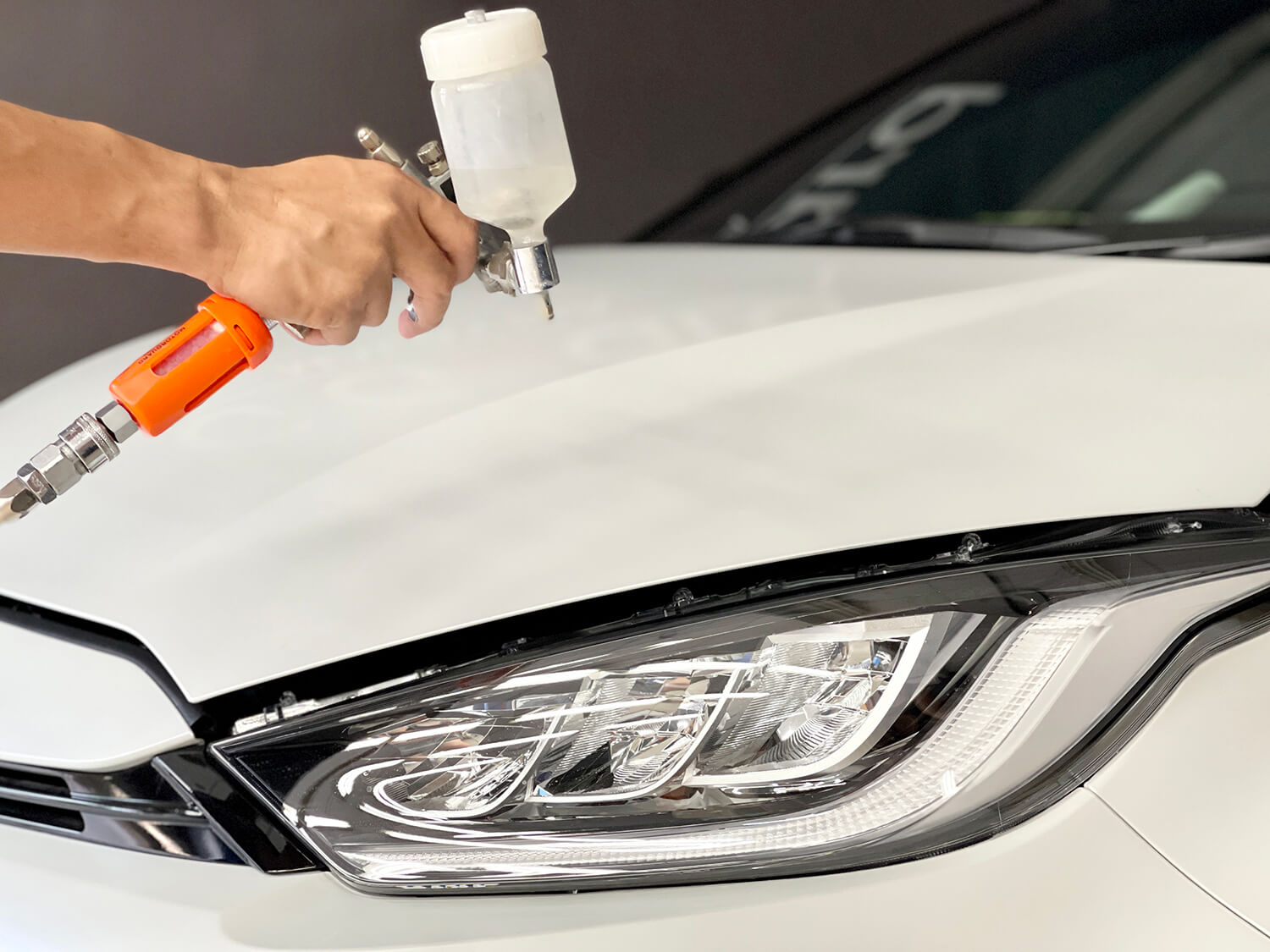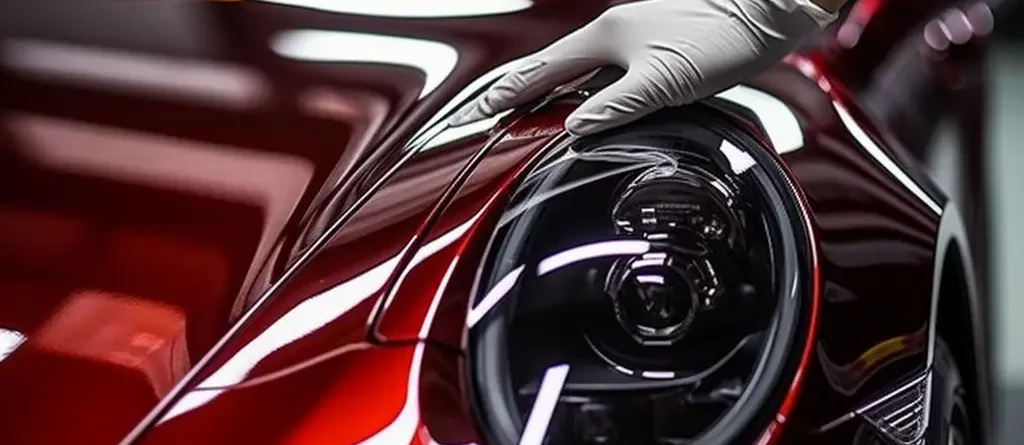What Makes Ceramic Coating the Best Choice for Car Paint Protection?
What Makes Ceramic Coating the Best Choice for Car Paint Protection?
Blog Article
Ceramic Finishing vs. Typical Wax: Which Offers Better Defense?
The dispute in between ceramic coating and standard wax for automobile security is one that values careful exam, particularly in terms of durability, resistance to ecological variables, and general upkeep demands. While ceramic layers assure expanded longevity and remarkable defense against a variety of hazards, traditional wax may attract those seeking a much more budget-friendly, albeit short-term, service. As we check out the nuances of each option, the effects of your choice might have long lasting results on your vehicle's appearance and upkeep routine. What factors should affect your decision?
Introduction of Ceramic Coating
Ceramic coating has gotten substantial appeal among automobile fanatics and specialists alike for its sophisticated safety qualities. This cutting-edge remedy includes a liquid polymer that chemically bonds to the automobile's manufacturing facility paint, creating a long lasting layer of protection. Unlike standard wax, which typically lasts for a few weeks to months, ceramic finishings can provide long-lasting defense for a number of years, depending upon the item used and application technique.

While the initial expense of ceramic coating might be more than that of typical wax, the long-lasting advantages, consisting of sturdiness and decreased upkeep frequency, usually validate the investment. As auto technology proceeds to advance, ceramic finishings have emerged as a preferred option for those seeking optimal defense and longevity for their automobiles.
Summary of Traditional Wax
The allure of standard wax depends on its simpleness and simplicity of use, making it a popular choice among vehicle owners looking for to boost their lorry's appearance and give a fundamental level of defense. Typically stemmed from all-natural carnauba or synthetic polymers, conventional wax develops a thin protective layer over the paintwork. The application process is straightforward, frequently involving a simple rubbing with a microfiber cloth, making it obtainable to both novice and seasoned customers.
Typical wax products are offered in various formulations, each made to provide to details demands, such as improving sparkle or supplying water beading. The convenience of wax permits use on various surfaces, consisting of paint, glass, and also plastic trim. While the application can be done by hand or machine, the trick is to ensure a tidy surface for optimal attachment.
However, one notable characteristic of conventional wax is its reasonably brief life expectancy contrasted to contemporary choices. Generally using protection that lasts from a couple of weeks to a few months, constant reapplication is necessary to maintain its performance. Despite these restrictions, traditional wax continues to be a popular selection for automobile lovers who appreciate the visual improvement it provides.
Key Defense Functions
When considering paint defense for automobiles, it's vital to recognize the essential functions that distinguish typical wax from even more advanced options like ceramic finishings. Among the key protective features of ceramic coatings is their durability. Unlike wax, which commonly lasts a few weeks, ceramic finishes can endure for a number of years, supplying long-lasting defense versus ecological impurities.
Ceramic coatings produce a hydrophobic surface area, warding off water and avoiding dirt, gunk, and various other particles from sticking to the paint. This attribute not only enhances the automobile's appearance yet also lowers the regularity of washing. In addition, ceramic layers this content use superior UV defense, protecting the paint from hazardous sun direct exposure that can bring about fading and oxidation.
On the other hand, traditional wax provides a more short-lived obstacle against aspects but lacks the resistance to scrapes and chemical spots that ceramic finishes supply. While wax can improve gloss, its protective capabilities are limited, especially versus harsher environmental variables such as bird droppings, tree sap, and road salt. In recap, the essential security functions of ceramic layers dramatically outperform those of standard wax, making them a remarkable choice for durable lorry care.
Application Process Comparison

On the other hand, the application of ceramic finishings is more time-sensitive and complex, often requiring professional support for optimum outcomes. The car's surface must be diligently cleaned, decontaminated, and polished to get rid of imperfections prior to the covering is applied. When prepared, the finishing is used in numerous layers, with each layer requiring specific healing times, often boosted by warm lights. This thorough procedure can span a number of hours to numerous days, depending upon the variety of layers and desired coating.
Ultimately, the choice between wax and ceramic covering pivots not only on protection degrees yet also on the time, competence, and sources offered for their corresponding applications. - ceramic coating
Cost Analysis and Long Life
Price plays a considerable function in the decision-making procedure between ceramic finishes and traditional waxes. Ceramic coatings generally command a higher in advance investment, varying from $500 to $2,000 relying on the high quality, brand, and specialist visit this web-site application solutions. This preliminary expense can be attributed to the advanced modern technology and products made use of in ceramic solutions, which use premium toughness and defense.
In comparison, conventional waxes are much extra economical, normally costing between $20 to $100 for DIY applications. However, the long life of wax items is restricted, often calling for reapplication every few months to maintain their safety qualities. This reoccuring cost can collect gradually, making wax less economical over time.
Ceramic coatings, while a lot more pricey initially, deliver durable results, typically exceeding 2 to 5 years with appropriate upkeep. This longevity can provide substantial cost savings over time, specifically for vehicle proprietors who focus on security and visual conservation - ceramic coating. Eventually, the option between ceramic finishes and typical waxes ought to think about both first prices and long-term value, factoring in the upkeep needs and preferred protection level for the lorry
Conclusion
In summary, ceramic layers give remarkable protection for vehicle paint compared to traditional wax, offering enhanced toughness, resistance to environmental variables, and hydrophobic properties. While the preliminary financial investment for ceramic finishings is higher, their longevity and minimized upkeep demands justify the price. Inevitably, for those looking for long-term automotive care and defense, ceramic finishes stand for an extra efficient service than conventional wax, which uses just temporary advantages.
The argument between ceramic finishing and standard wax for vehicle defense is one that merits mindful exam, especially in terms of resilience, resistance to environmental variables, and overall maintenance needs.When taking into consideration paint defense for automobiles, it's crucial to recognize the key functions that distinguish standard wax from even more sophisticated alternatives like ceramic finishes. In summary, the crucial security features of ceramic layers significantly outperform those of conventional wax, making them an exceptional option for durable car care.
Ultimately, the selection between ceramic coatings and typical waxes must consider both first costs and long-term worth, factoring in the maintenance demands and wanted defense degree for the lorry.
In recap, ceramic coverings give premium defense for vehicle paint contrasted to typical wax, additional hints offering enhanced sturdiness, resistance to environmental factors, and hydrophobic buildings.
Report this page